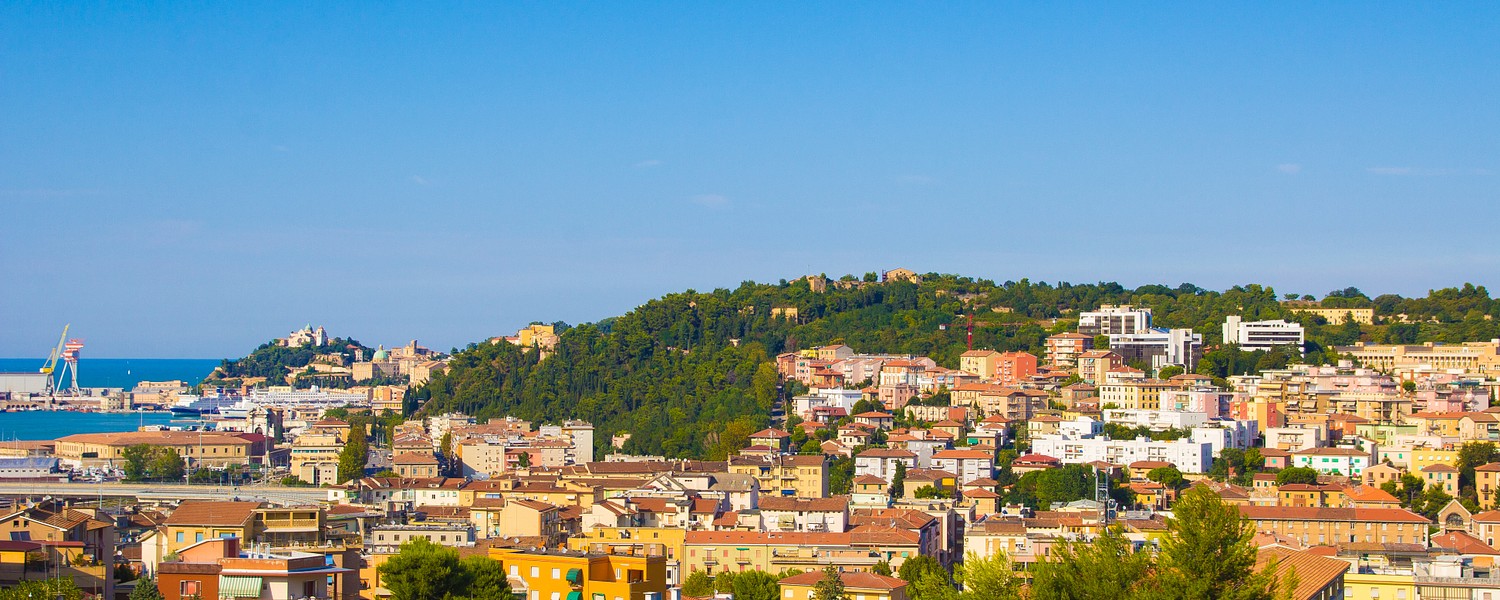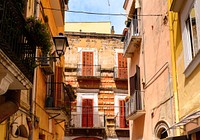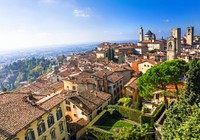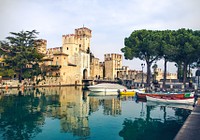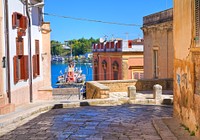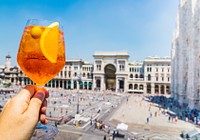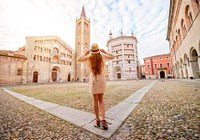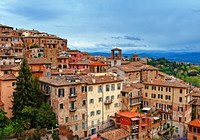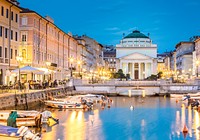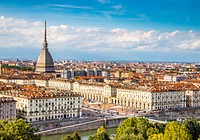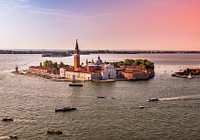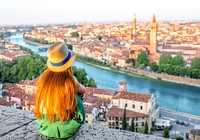Ancona
As the capital of a rich and historic region, Ancona is, above all, a city of the sea. The city is blessed with a magnificent coastline to the south, with clean and accessible water and unspoilt white beaches. Close by are the beautiful towns of Loreto, Recanati, Jesi and Urbino as well as the rolling hills of the hinterland and the world-famous Grotte di Frasassi.
Bari
The coastal gem in Southern Italy offers a captivating mix of history, culture, and stunning Mediterranean landscapes. Explore the historic Old Town and wander through the winding streets, where laundry flaps in the breeze and locals chat over espresso in lively cafés, savour the local cuisine known for its fresh seafood, handmade pasta, and delicious street food, and soak up the Adriatic's beauty along its picturesque coastline.
Bergamo
In the Alpine foothills, just 50 km from Milan, Bergamo is the most striking city in Lombardy. Built on two levels, the Lower City is more modern and dynamic, whilst the famous ‘Upper City’ boasts a stunning historic centre full of monuments and works of art. In the area around the city the Iseo Lake is well worth a visit, as are the sanctuary at Caravaggio and Crespi d’Adda – the most important company town in Italy, listed as a world heritage site by UNESCO.
Bologna
As the capital of the Emilia Romagna region, Bologna is an art city, a university centre and a place renowned for its excellent cuisine. It hosts important international trade fairs and is one of the world’s greatest motor cities. Ducati, Lamborghini and Maserati were all born in Bologna and Ferrari’s headquarters can be found in nearby Modena.
Brescia
Prosperous and lively, Brescia is Lombardy’s second biggest city, a university town with a modern business area (Brescia Due). Located between two of Italy’s most famous lakes, Lake Garda and Lake Iseo, Brescia is often overlooked by visitors who bypass the city itself and head straight to the undeniably beautiful lakes. A great pity, as Brescia boasts one of the most beautiful historic centres in the region, and some of the best Roman and Lombard remains in northern Italy.
Brindisi
Discover Brindisi, a sun-drenched jewel on the Adriatic Sea and the beating heart of Italy's Apulia region. More than just a coastal beauty, Brindisi serves as a living museum to a myriad of vanished civilisations. Picture yourself strolling along ancient Roman roads, gazing up at majestic Gothic and Baroque cathedrals, or getting lost in the imposing shadows of Swabian castles from the era of Frederick II, the Holy Roman Emperor. With every step you're walking through centuries of layered history. Come for the sea, stay for a journey back in time.
Florence
Florence, the regional capital of Tuscany, is one of the most popular tourist destinations in Italy. It is acknowledged by UNESCO as a World Heritage Site and stepping onto its historic cobbles, it is easy to see why. Cradled between the surrounding hills, the city hosts some of the most famous works of art on the planet, and the whole of the city centre is packed with stunning palaces, churches, and monuments. The surrounding countryside is well-known for its rolling hills and its wine, particularly the Chianti area between Siena and Florence.
Genoa
Sandwiched between the sea and the Ligurian hills, Genoa is a city that leaves a lasting impression. Its history is a fascinating tapestry of triumphs and setbacks, as reflected in the city's rich architecture. As the European Capital of Culture in 2004, Genoa boasts an impressive collection of museums and galleries, as well as a renowned theatre and the largest aquarium in Europe. The city has also good shopping, the best nightlife in the region, and excellent restaurants. And for those looking to explore beyond the city limits, day trips along the picturesque Ligurian coast come highly recommended.
Milan
Milan is famous as one of the world’s most influential fashion capitals, so make some room in your wardrobe and get ready for a makeover. Milan is a major cultural centre in Italy, with world class museums and galleries, the Duomo cathedral and ancient churches, impressive architecture of opulent Italian villas. After viewing da Vinci’s Last Supper, try Lombardi specials like ossobuco and risotto alla Milanese in one of the neighbourhood restaurants. Milan is the perfect starting point for exploring the prettiest landscapes of northern Italy.
Palermo
Capital of the beautiful region of Sicily, Palermo is a fascinating hidden gem awaiting to be discovered. This busy port city pulsates with vibrant energy, embodying a perpetual transformation that has firmly reinstated it among Europe's cultural hubs. Palermo is full of sights and treasures: from ornate Baroque churches and glorious Norman-Gothic architecture to elegant Art Nouveau villas and lively markets. Amidst the chaotic streets, the city's flamboyant spirit thrives, offering a delightful surprise at every turn.
Parma
Speaking of Parma, the first things that come to mind are probably the ham and Parmesan cheese. Indeed, Parma is one of the most important culinary centres of Italy — but this city is so much more than that. Parma was the capital of a very powerful duchy, which left a legacy of stunning monuments and palaces. In addition, the splendour of that period created fertile grounds for the flourishing of art. In fact, Parma became one of the main centres for opera, thanks to its amazing theatres and its fine citizen Giuseppe Verdi.
Perugia
Perugia is the provincial capital of Umbria, one of Italy’s most beautiful regions. The ancient heart of the city, packed full of Etruscan and Roman monuments, perches on a hilltop with the modern city spread below. With a prestigious university, the city has a lively student population, good shopping, fun bars and great restaurants. If that weren't enough, Perugia is the setting for one of Europe’s best jazz festivals: Umbria Jazz.
Pisa
Pisa is strategically located in the central part of Italy, at only 12 km from the Ligurian Sea, 20 km from the harbour of Livorno and the ferries heading to the Elba Island, Sardinia and Corsica, and 80 km from Florence.
This city is most known for its leaning tower, but it also preserves Piazza dei Miracoli, a UNESCO World Heritage Site, its medieval centre, numerous masterpieces of architecture and medieval history.
The area around Pisa is also excellent for farm holidays, trekking, beaches and water sports on the Versilian coast.
Trieste
As the poet Umberto Saba wrote: “Trieste has an unsociable grace. Located between the sea and the mountains of Carso, beautiful and fascinating, she does not like to show off, although she conquers her visitor at first sight.”
Tergeste, as Trieste was named during the Roman era, is to be discovered on foot, to fully taste her richness and to breathe, through her streets, buildings and monuments, her 2000-year-old history.
Turin
Turin, Italy's first capital, is a city awash with history, green parks and art, not to mention that it is a town with renowned food and even better drinks. Under the arcades of the city centre there are countless wine bars, grandiose continental cafés and lively bars and restaurants, all just steps away from luxury shopping streets. Even if it is mostly known abroad for Fiat and Juventus, Turin is a fascinating metropolis with its eyes set firmly on the future thanks to its young population and great universities.
Venice
From its unmatched romantic allure to its historical heritage to its indisputable beauty, there is no other city like Venice. The "Queen of the Adriatic" is composed of a maze of islands, canals, and bridges, hiding magnificent buildings, historical landmarks of great artistic and cultural importance, as well as charming restaurants and squares. There are no cars in Venice, but you won't need them anyway since "The City of Bridges" is best explored on foot.
Verona
Verona is a city that quietly sweeps you off your feet. From the Roman Arena to Juliet’s balcony, its beauty unfolds in sunlit piazzas, riverside strolls, and evening aperitivo. A UNESCO World Heritage Site, 'The City of Love', as it is known, blends history, romance, and that effortless Italian warmth. Stay awhile—and you’ll soon see why it is one of Italy’s most beloved places.

